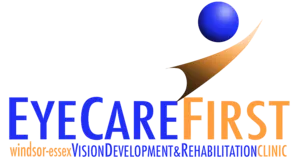
Awakening Areas of the Brain: How One Man Improved His Stereo Vision by Watching a 3D Movie
Life is a little more difficult when you can't see things in three dimensions. Without good 3D vision and depth perception, judging distances and understanding how much space objects take up is anything but easy. You may find it difficult to determine when it's safe to pass a car in the next lane, be frustrated by your inability to catch a ball, or become fatigued after reading a few paragraphs. Until recently, scientists believed that brain connections and pathways necessary for good vision couldn't change in adults. The late Bruce Bridgeman proved that theory wrong.
A 3-D Movie Changed Bruce Bridgeman's Life
Bruce Bridgeman, a University of California psychology and psychobiology professor who researched spatial orientation and neuroscience, struggled with depth perception all of his life. His eyes pointed in different directions due to strabismus, which affected his stereo vision. Stereo vision combines the separate images from each eye to create a single image that makes it possible to see in three dimensions. Dr. Bridgeman compensated for the problem by using one eye to look at near objects and the other to view far objects.
In February 2012, Dr. Bridgeman and his wife saw a screening of the movie "Hugo," a 3D film about an orphan who lives in a Paris train station. When Dr. Bridgeman put on the 3D glasses, he was amazed to discover that he could actually see in three dimensions. Although the experience was certainly exciting, he wasn't prepared for what would happen when he stepped outside of the theater.
Watching a two-hour movie had somehow activated a crucial brain pathway and improved his stereo vision. Dr. Bridgeman wrote about the experience in a June 2014 article in Optometry and Vision Science.
"When the movie ended, we turned in our polarized glasses and walked out into the street. I was astonished to see a lamppost jump out from the background," he wrote. "Trees, cars, even people, appeared in relief more vivid than I had ever experienced...In the next few days, I began experiencing the world in a new light. Riding to work on my bike, I looked into a forest beside the road and saw a riot of depth, every tree standing out from the others, a 3D feast."
A visit to the optometrist six weeks after seeing "Hugo" revealed that Dr. Bridgeman's stereo vision wasn't normal, although it was very much improved. He was now twice as sensitive to stereo, simply because he watched a 3D movie.
The Importance of Dr. Bridgeman's Experience
Dr. Bridgeman's miraculous ability to see in three dimensions after a lifetime of two-dimensional vision proves that the brain retains plasticity, or the ability to adapt, long past childhood. In fact, it's never too late to try to improve your vision. Adults with ambylopia (lazy eye) who played video games with their "good" eyes patched improved their visual acuity and 3D depth perception in a University of California at Berkeley Studio.
Sue Barry, known as "Stereo Sue," experienced a deficit in stereo vision due to childhood strabismus (crossed eyes) and ambylopia. After a vision therapist fitted her with eyeglasses that contained prisms and created a vision therapy program for her, her depth perception and ability to see three-dimensional objects improved significantly.
Vision therapy produces equally impressive results for other adults who never thought that their vision could improve. The therapy may be helpful if you experience double vision, difficulty reading or remembering what you read, poor depth perception, inability to see in 3D, eyestrain or trouble driving.
Would you like to find out if vision therapy can improve your vision? Contact us to schedule your comprehensive eye examination.
Sources:
Optometry and Vision Science: Restoring Adult Stereopsis: A Vision Researcher’s Personal Experience, 6/14
CNN: Man: 3-D Movie Changed My Sight for the Better, 6/16/13
https://www.cnn.com/2013/06/15/health/stereo-vision-recovery/index.html
PLOS Biology: Video-Game Play Induces Plasticity in the Visual System of Adults with Ambylopia, 8/30/11
http://journals.plos.org/plosbiology/article?id=10.1371/journal.pbio.1001135
The New Yorker: Stereo Sue, 6/9/06


